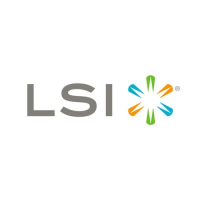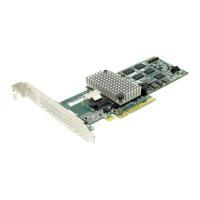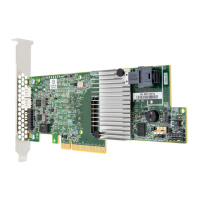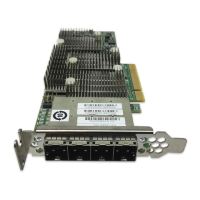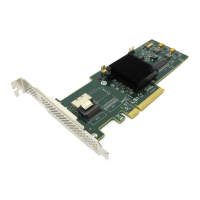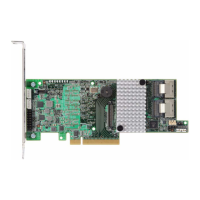Background Tasks
www.lsi.com/channel/products 151
recovered data is written to the problem sector. This forces the drive to
reallocate the defective sector with a good spare sector.
If the verify unit process determines that the mirrored drives are not identical
or the parity is not correct, the error is corrected. For RAID 1 and 10, this
involves copying the miscompared data from the lower port(s) to the higher
port(s) of the mirror. For RAID 5, RAID 6, and RAID 50, this involves
recalculating and rewriting the parity that was incorrect. AEN 36 (
“Verify
detected and fixed data/parity mismatch”) is posted to the Alarms page.
For RAID 1 and 10, verification involves copying the data from the lower
port(s) to the higher port(s) of the mirror. For RAID 5 and RAID 50, this
involves recalculating and rewriting the parity for the entire unit. If the unit is
not redundant, a file-system check is recommended to correct the issue. If the
errors persist and cannot be overwritten from a backup copy, perform a final
incremental backup. You will need to replace the defective drive, recreate the
unit, and reinstall the data.
How Errors Are Handled
Verification makes use of the same error checking and error repair techniques
used during ordinary use of drives configured through 3ware RAID
controllers.
When verification encounters an error, the controller typically retries the
command. If there are cable CRC errors, there may be multiple retries
including downgrade of the UDMA mode. If the error persists and is
unrepairable (e.g., ECC errors), an error notification is issued to indicate the
problem. (See AEN “0026 Drive ECC error reported” on page 252.)
If the disk drive is part of a redundant unit that is in a redundant state (not
degraded or rebuilding), then Dynamic Sector Repair automatically rewrites
the redundant data to the error location to force the drive to reallocate the
error location. A notification of repair is posted to the alarms list. The result is
a restoration of drive and data integrity; the primary and redundant data are
again both valid.
If the unit is not redundant, it is recommended that you perform a file-system
check to correct the issue. Under Windows, you can do this by right-clicking
on the Drive and choosing Properties; then on the Tools tab, click Check Now.
Under Mac OS X, you can do this using the First Aid tab in the Disk Utility—
select the disk on the left and then click Verify Disk. If verification encounters
problems, you can then use the Repair Disk option on the same screen.
If the errors persist and cannot be overwritten from a backup copy, perform a
final backup of files that have changed since your last backup. You will need
to replace the defective drive, recreate the array, and reinstall the data.
